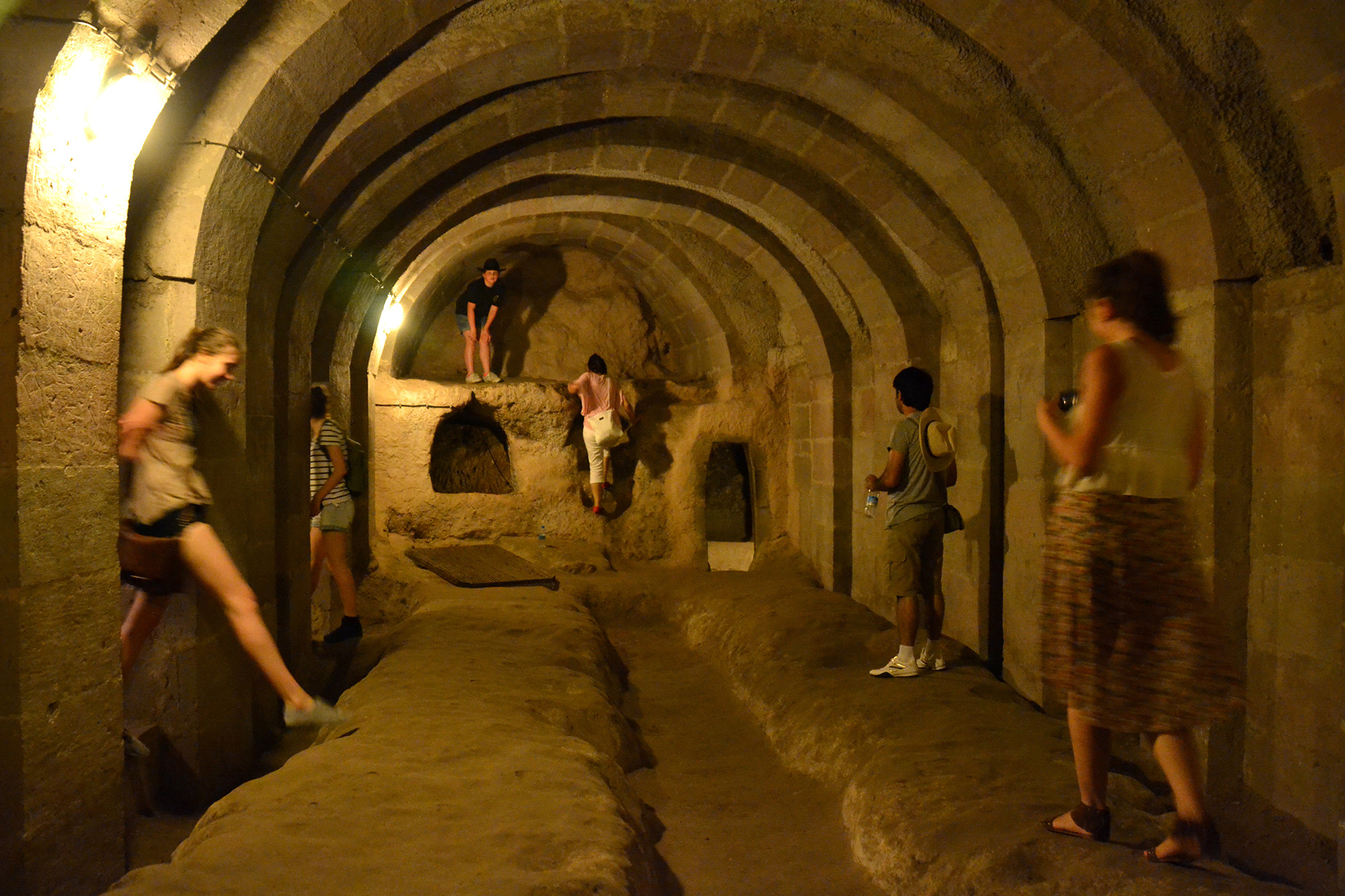If last week we talked about the perpetual luminosity of the cities we inhabit, this week we want to take you to the opposite extreme, in a society in constant darkness, moving underground in a human anthill of appalling dimensions.
Turkey occupies a strategic position in the historical landscape, a region that lies between Europe and Asia as well as between three seas, and which has been a historical crossroads between Eastern and Western cultures and civilizations. As such, it has been the cradle and object of desire of great civilizations of history (Ottomans, Romans, Byzantines…) and therefore, bloody battles have been fought behind its border. The populations that have inhabited it since the 17th century B.C. have sought the best ways to protect their cities and maintain their hegemony.

In the province of Nevşehir (central Anatolia), the city of Derinkuyu appears, a settlement dating from the seventh century that gives us the opportunity to enter a great unexplored world under our feet: passageways, homes, stable halls, which make up an anthill drilled in volcanic rock. It is not a cluster of caves: ten thousand people were able to stay in an underground network of up to 20 levels, 60 meters deep, which ends up connecting with the other 36 cities in the region by means of tunnels three kilometers long in the worst case scenario.
The soil as the best defence
The constant attacks and invasions of Cappadocia caused its inhabitants to devise escape plans that would allow them to survive for long periods out of sight of their enemies, avoiding collateral damage in the defense of the territory. These large underground infrastructures were real buried cities for short and medium term operation, where there was no lack of decoration, spaces for domestic animals, squares, shops, homes, places of worship and streets. They also ended up becoming a refuge when the climate was not favourable enough, taking advantage of the thermal stability of the soil.

Derinkuyu and Kaymakli are the two most famous cities of this type, connected by a large gallery (already buried), and have been under archaeological work since the 1960s, although there is documentation of them in operation thanks to the Greek historian Xenophon (431-354 B.C..), who expressed how entire families and their beasts, along with the necessary supplies, were buried in this labyrinth of artificial caves that emerged through ventilation ducts up to 6 meters wide to make the spaces habitable over long periods of time.
In addition, defense was the main strength of underground cities, as corridors rarely emerged, perfectly controlling the entry of enemies or undesirables and generating barriers by means of large sliding stones that acted as gates and hid the city from view of the world.

The work of the archaeological teams turned after the discovery of this subterranean framework, in a work that has been going on for almost 50 years and that continues to discover levels at greater and greater depths. Imagining the situations lived in their corridors, the conditions in which they lived and their daily life, puts our feet back on the lines of minimum housing and human limits.
[expand title=”Sources and more information”]
The undergorund city of Derinkuyu
Official website of the district [/expand]